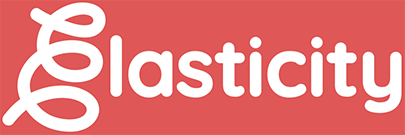“You gentlemen have been f****** up this business long enough—I’m going to straighten it out.”
These were the first words out of Samuel Zemurray’s mouth after waltzing into a board meeting at United Fruit, one of the largest companies in the history of civilization. He proceeded to tell everyone in the room they they were fired.
They had no idea what he was talking about.
Between The Great Depression and lackluster management, United Fruit’s stock had plummeted nearly 90 percent. Zemurray had spent too many years sweating in Central American jungles to let a bunch of rich known-nothings in Boston ruin his life’s work.
But before we learn the fate of Sam the Banana Man’s hostile takeover, we have to go to the beginning: to the shores of Mobile, Alabama.
As I write this, millions of people are sitting, slack-jawed, in front of their televisions and tablets binge-watching their favorite shows through modern streaming technology. And who can blame them? Shows like Stranger Things, Ozark, and 13 Reasons Why aren’t just “good” or “exciting”—they are engineered by some of the smartest people in the world to keep viewers clutching the edge of their seats, desperate for resolutions to tantalizing plotlines.
But as we can see from the introduction about Samuel Zemurray, the same effect can be induced with the written word, or, through savvy marketing content.
Netflix has turned the art of cliffhangers into a science. The entertainment powerhouse has amassed a global audience of religious-like loyalty (and made a good chunk of change in the process) largely in part because it keeps loose ends untied and resolutions withheld. It takes every ounce of viewers’ willpower to press “stop” after each episode—and that is exactly how the West Coast brainiacs at Netflix want it.
Human beings are wired for closure. Jokes without punchlines and stories (written or visual) without resolutions leave people annoyed and even physically uncomfortable. But that’s not a bad thing, especially if you’re in the business of storytelling. In fact, if you know your way around a cliffhanger, there’s no telling how big of an audience you’ll build.
From a marketing perspective, as someone whose livelihood depends on capturing people’s attention with words, you must understand how the brain responds to words, and accordingly create a loose framework for telling better stories. At least, that is if you want to be effective at driving whatever your brand’s or organization’s ultimate goals.
It goes something like this:
The Hook
Most of us were taught to tell stories in chronological order, from beginning to end. But the most captivating narratives tease audiences with an anecdote from the heart of the plot. This technique draws the reader in with a question: how did we get here?
If we use the Zemurray story as an example, the hook sentence (“You gentlemen have been f****** up this business long enough…”) falls between the rising action and climax in the story arc.

A hook can’t be just any anecdote, though. It must be deliberately provocative, emphasizing the most absurd or counterintuitive aspect of the story. Remember: the average person’s attention span is eight seconds—you don’t have time to dilly dally here.
The Buildup
After the audience is hooked with a juicy sentence or two, it’s time to reel them in. You’ve got a foot in the door, but cat videos and porn are still a click away: don’t take the attention for granted.
The buildup, rising action, or whatever you want to call it always boils down to conflict. This is the essence of every tragedy, romance, and hero’s journey. We are empathetic creatures, and we take great joy in seeing others overcome obstacles (or crumble in the face of them.)
The conflict in the Zemurray story is obvious: United Fruit had its back against the wall, and now some new guy was throwing a wrench in the system.
What the hell happens next? Bankruptcy? Redemption? A conspiracy to kill Zemurray?
The Cliffhanger
This is the fun part. If you’ve written a compelling hook and buildup, the readers will be puddy in your hand: you can take them wherever you want with the story. But you can’t just give away the resolution—you have to make them work (read) for it.
Just when the reader expects you to tie up that loose end, you pivot 180 degrees:
…But before we learn the fate of Sam the Banana Man’s hostile takeover, we have to go to the beginning: to the shores of Mobile, Alabama.
If this was a Netflix series, this is the part where you look at the time slider at the bottom of the screen and say, What?! This can’t be the end..when does the next season start???
Congratulations, you’ve bought another 10 seconds of reading time.
As dismal as that sounds, it’s a monumental accomplishment in a digital ecosystem that’s characterized by endless, on-demand entertainment and goldfish-like attention spans. Content is war, and the most valuable weapons are novelty and suspense.
The cliffhanger technique, at its core, isn’t about psychological manipulation or profit. The art of storytelling transcends entertainment. If you have something important to say, your story is the difference between changing the world and having the world scroll right past you.
In his book What is Art? the Russian novelist Leo Tolstoy defined art as “an infection.” Good art, he explained, infects the audience with the artist’s emotions and ideas; the message finds its way into the reader’s mind through the vessel of a narrative, bypassing their skepticism and doubts. The more skilled the artist, the stronger the infection becomes.
Tolstoy knew nothing about how storytelling worked at a neuroscientific level, but as we sit here more than 100 years after his death, we have evidence that stories spike oxytocin, or the “empathy chemical,” levels in our blood. In other words: stories literally change our brain chemistry.
No wonder 100+ million Netflix users are hooked on cliffhangers.
Oh, and if you want to find out what happened with Sam the Banana Man’s hostile takeover of United Fruit, you can read the full story from Michael Tunney here.



